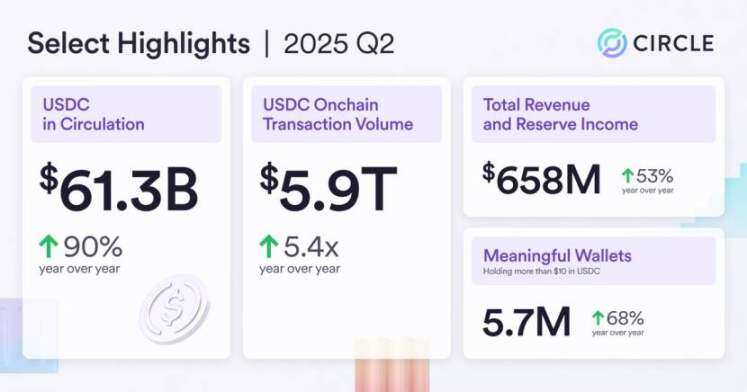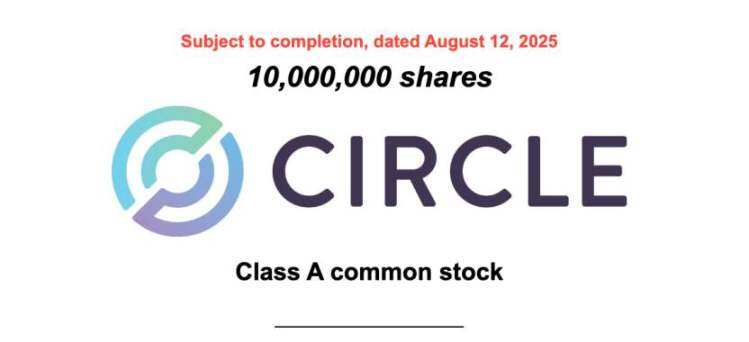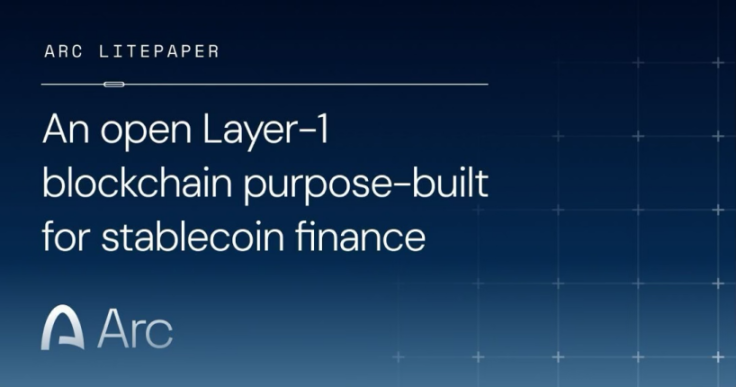After a 10-fold stock surge, Circle’s first financial report highlights both the bright spots and the hidden concerns.Re
Just last night, Circle, the issuer of the stablecoin USDC, released its Q2 report card.
As Circle’s first post-IPO financial report, the data provided provides crucial insight into the market’s true value as the “first stablecoin stock.” By analyzing key financial indicators, we can more clearly see Circle’s growth momentum and potential challenges.
USDC is expanding rapidly, but its revenue structure is limited.
Judging from the information disclosed in the financial report, the following data need special attention.
Core Business Metrics: USDC Strong Expansion
First of all, the most notable thing in the financial report is the double growth of USDC circulation and market share.
By the end of Q2, USDC’s circulating supply reached $61.3 billion, a 90% year-over-year surge and a 49% year-to-date increase. As of August 10th, this figure had climbed further to $65.2 billion, demonstrating its continued growth momentum. In terms of stablecoin market share, USDC maintains a solid position of approximately 28%, solidifying its position as the second-largest stablecoin.
Secondly, USDC trading activity has exploded.
USDC on-chain transaction volume reached $5.9 trillion, a 540% year-over-year increase. This explosive growth not only reflects the rapid expansion of USDC’s use cases, but also highlights the significant trend of the entire stablecoin ecosystem transitioning from a simple store of value to a payment and settlement tool.

Financial performance: Strong revenue growth but structural imbalance
The financial report shows that Q2 total revenue reached US$658 million, a year-on-year increase of 53%, including:
- Reserve interest income: US$634 million (96.4%), a year-on-year increase of 50%
- Subscription and services revenue: $24 million (3.6%), up 252% year-over-year
Under this revenue structure, Circle still relies heavily on reserve interest income. Although subscription service revenue grew by 252%, its absolute value is still small.
Circle is highly dependent on reserve income generated by the Federal Reserve’s high interest rate environment. This reliance on a single revenue source poses its greatest operational risk. If the Fed enters a cycle of rate cuts, Circle’s profitability will face a severe test.
In addition, a point that is easily overlooked is that the high IPO fees mask the actual operating performance.
If we only look at the overall figure, Circle’s net loss in Q2 reached $482 million. Although this figure is large in absolute terms, if we look at it separately:
IPO-related non-cash charges totaling $591 million
- Equity compensation expense: $424 million
- Convertible bond fair value adjustment: $167 million
Adjusted EBITDA (earnings before interest, taxes, depreciation and amortization) was US$126 million, an increase of 52% year-on-year.
In other words, excluding IPO-related expenses, Circle’s actual operating performance remains solid. Adjusted profitability metrics indicate healthy growth in the company’s core business, which explains why its stock price rose after the earnings report was released.
Pressure to cash out under high valuations
On the same day the financial report was released, Circle announced a secondary offering of 10 million shares.
Based on the closing price of $163.21 that day, the offering raised $1.63 billion. Compared to the IPO price of $31, early investors received a return of over 426%, cashing out over $1 billion.
Among them, Circle’s CEO Allaire has sold 357,800 shares, but still maintains 23.9% of the voting rights.

Based on the above financial data, we can see that USDC’s network effect is accelerating. However, Circle also faces significant challenges:
The over-reliance of the revenue structure on the interest rate environment, the continuous emergence of competitors (such as PayPal’s PYUSD), and the uncertainty of regulatory policies are all problems that must be faced.
The Q2 financial report provides a basis for assessing whether Circle is overvalued, but the final judgment still needs to observe the performance in the next few quarters, especially Circle’s ability to respond when the interest rate environment changes.
Strategic Transformation: Circle’s Diversified Path to Breakthrough
The strategic initiatives disclosed by Circle in its Q2 earnings report and subsequent conference call also clearly outlined the company’s path to transform from a stablecoin issuer to a comprehensive financial infrastructure provider.
This may also be a response to the problem of the single income structure disclosed in the financial report.
Circle’s announcement that it will launch its proprietary blockchain, called Arc, in the second half of 2025 quickly became a hot topic in the market. Officially, Arc is an open public blockchain designed specifically for stablecoin finance, using USDC as its native gas token and focusing on application scenarios such as payments and foreign exchange.

Interestingly, the stablecoin giants seem to have chosen the same path without prior agreement.
USDT issuer Tether is developing Stable, and payment giant Stripe has teamed up with top VC Paradigm to launch Tempo. The competition around the stablecoin payment chain has begun, and just today, OKX announced that it will upgrade the X Layer and enter the payment chain track.
In this competition, Circle’s advantages are obvious: compared to Tether, which faces regulatory pressure, Circle has a unique compliance advantage, and the GENIUS Act promoted by the Trump administration has cleared policy obstacles for it; compared to Stripe, which has rich payment experience, Circle has the network effect brought by USDC’s 24% market share and the trust base of more than 1,800 institutional customers.
The deeper business logic lies in the fact that the launch of Arc directly responds to Circle’s biggest weakness – over-reliance on interest income.
Currently, Circle derives 96% of its revenue from interest earned on USDC reserves, a reliance that could become a critical weakness in a period of interest rate cuts. By controlling blockchain infrastructure, Circle not only captures on-chain transaction fees but also opens up new revenue models like staking, while reducing its reliance on third-party blockchains and its growing distribution costs.
In addition to launching its self-developed public chain Arc, Circle also mentioned in its Q2 financial report and conference call that it will deepen cooperation with companies such as Binance, FIS, and Corpay.
This includes working with Binance to promote the use of Circle wallet technology and the tokenized market fund USYC on Binance’s institutional trading products as income and over-the-counter collateral; working with Corpay to combine global foreign exchange with USDC to provide 7 x 24 settlement and other services to businesses around the world; and collaborating with FIS to enable US financial institutions to provide domestic and cross-border USDC payments through FIS’s Money Movement Hub, combining Circle’s blockchain-native infrastructure with FIS’s real-time payments to unlock faster and lower-cost compliant digital dollar transactions.
In addition to the above three companies, Circle also mentioned its cooperation with mainstream exchange OKX and financial technology company Fiserv in its financial report.
Overall, Circle’s Q2 financial report paints a picture of a company at a critical transition. It’s both a leader in the stablecoin market, enjoying the growth dividends of USDC’s network effects, and a fintech company facing structural challenges, which must reshape its business model before the arrival of a downward interest rate cycle.
Circle is undoubtedly a star company in this year’s stock market. However, despite its status as the first stablecoin stock, investors must remain aware of the challenges it faces. The transition from a single stablecoin issuer to a global digital financial infrastructure provider is fraught with uncertainty. Can Circle continue its legendary tenfold stock price surge after its IPO? We remain to be seen.
Related: When Technology Meets Foreign 交換 Barriers: Why Is Stablecoin Growth Difficult to Break Through the “Traditional Di
Original translation: Saoirse, Foresight News Key Points According to data from Visa and Allium, stablecoin transaction volume has reached $5 trillion so far in 2025, involving 1 billion payments. When using stablecoins to exchange different fiat currencies, costs similar to regular exchanges will be incurred, including bid-ask spreads, exchange fees, intermediary fees, and slippage. Mike Robertson, CEO of foreign exchange infrastructure company AbbeyCross, commented on the limitations of stablecoins as an emerging payment tool: “In the cryptocurrency world, some people believe that code and technology can solve all problems. But in the foreign exchange world, this idea is naive.” While stablecoins have reached a peak of anticipation, veterans in the fintech space still believe that these tokens have limitations as an emerging payment tool. According to data from Visa and…







